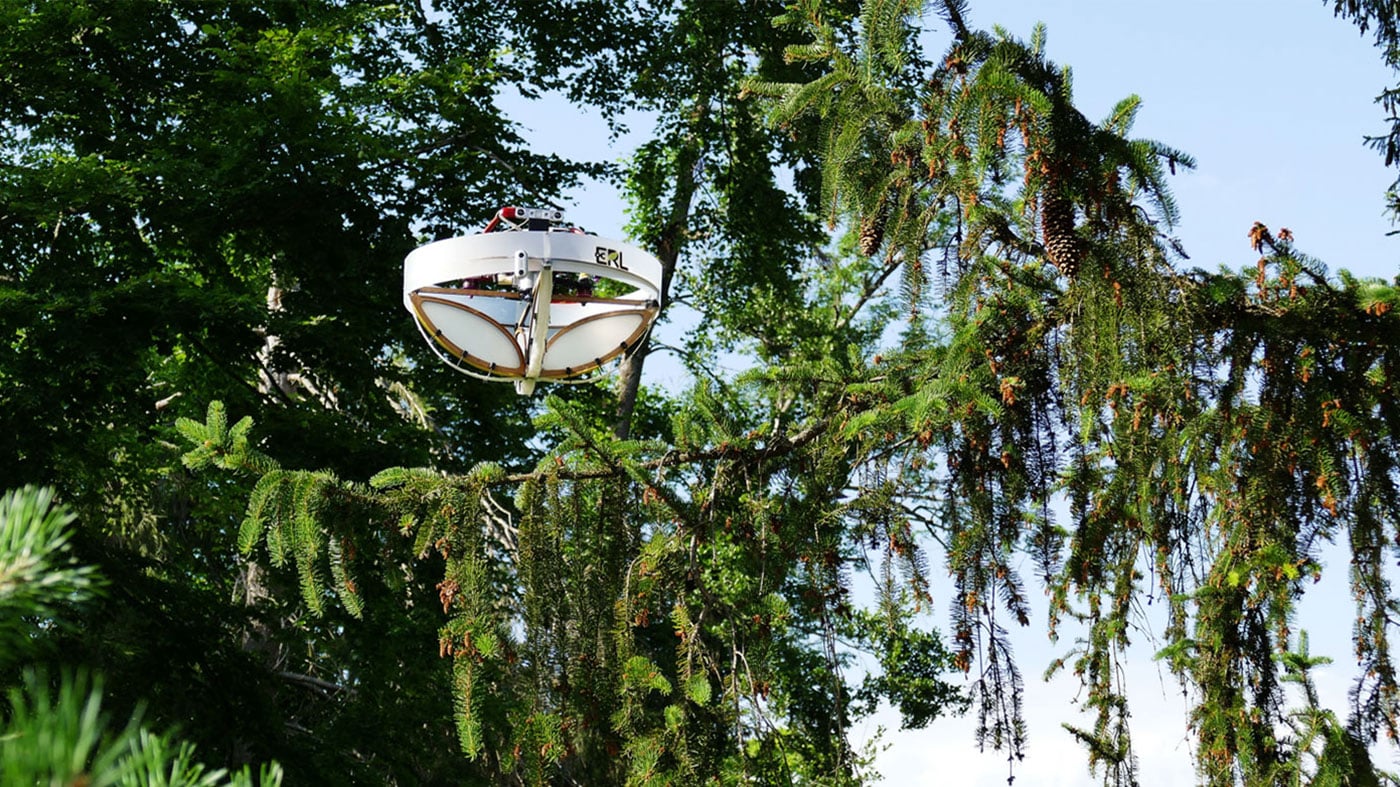
In recent years, biodiversity has been declining at an alarming rate due to land use change, climate change, invasive species, overexploitation, and pollution. The protection and restoration of the biosphere are crucial for human resilience and well-being. But the scarcity of data on the status and distribution of biodiversity puts these efforts at risk.
DNA released into the environment by organisms, i.e., environmental DNA (eDNA), can be used to monitor biodiversity. Based on these DNA traces, researchers can determine which species are present in a certain area. However, the collection of eDNA in terrestrial environments remains a challenge because of the many potential surfaces and sources – such as the forest canopy – that need to be surveyed and their limited accessibility.
Now, researchers at ETH Zurich, the Swiss Federal Institute for Forest, Snow and Landscape Research WSL, and the company SPYGEN have partnered to develop a special flying device that can autonomously land on tree branches to take samples.
Known as the eDrone, the device is equipped with adhesive strips, a depth-sensing camera, and other sensors. When the aircraft lands on a branch, material from the branch sticks to these strips. Researchers can then extract DNA in the lab, analyze it and assign it to genetic matches of the various organisms using database comparisons.
But the branches vary in terms of their thickness and elasticity and also bend and rebound when a drone lands on them. “Landing on branches requires complex control,” explains Stefano Mintchev, Professor of Environmental Robotics at ETH Zurich and WSL.
Initially, the drone did not know how flexible a branch is, so the researchers fitted it with a force-sensing cage. This allows the drone to measure this factor at the scene and incorporate it into its flight maneuver.
So far, researchers have tested their new flying device on seven tree species from which they found DNA from 21 distinct groups of organisms, or taxa, including birds, mammals, and insects. In the future, researchers want to improve their drone further to get it ready for a competition in which the aim is to detect as many different species as possible across 100 hectares of rainforest in Singapore in 24 hours.
Collecting samples in a natural rainforest, however, presents the researchers with even tougher challenges. Frequent rain washes eDNA off surfaces, while wind and clouds impede drone operation. “We are therefore very curious to see whether our sampling method will also prove itself under extreme conditions in the tropics,” said Mintchev.
Journal reference:
- Emanuele Aucone, Steffen Kirchgeorg, Alice Valentini, Loïc Pellissier, Kristy Deiner, Stefano Mintchev. Drone-assisted collection of environmental DNA from tree branches for biodiversity monitoring. Science Robotics, 2023; DOI: 10.1126/scirobotics.add5762
New flying device collects environmental DNA from trees
Source: Tambay News

0 Comments